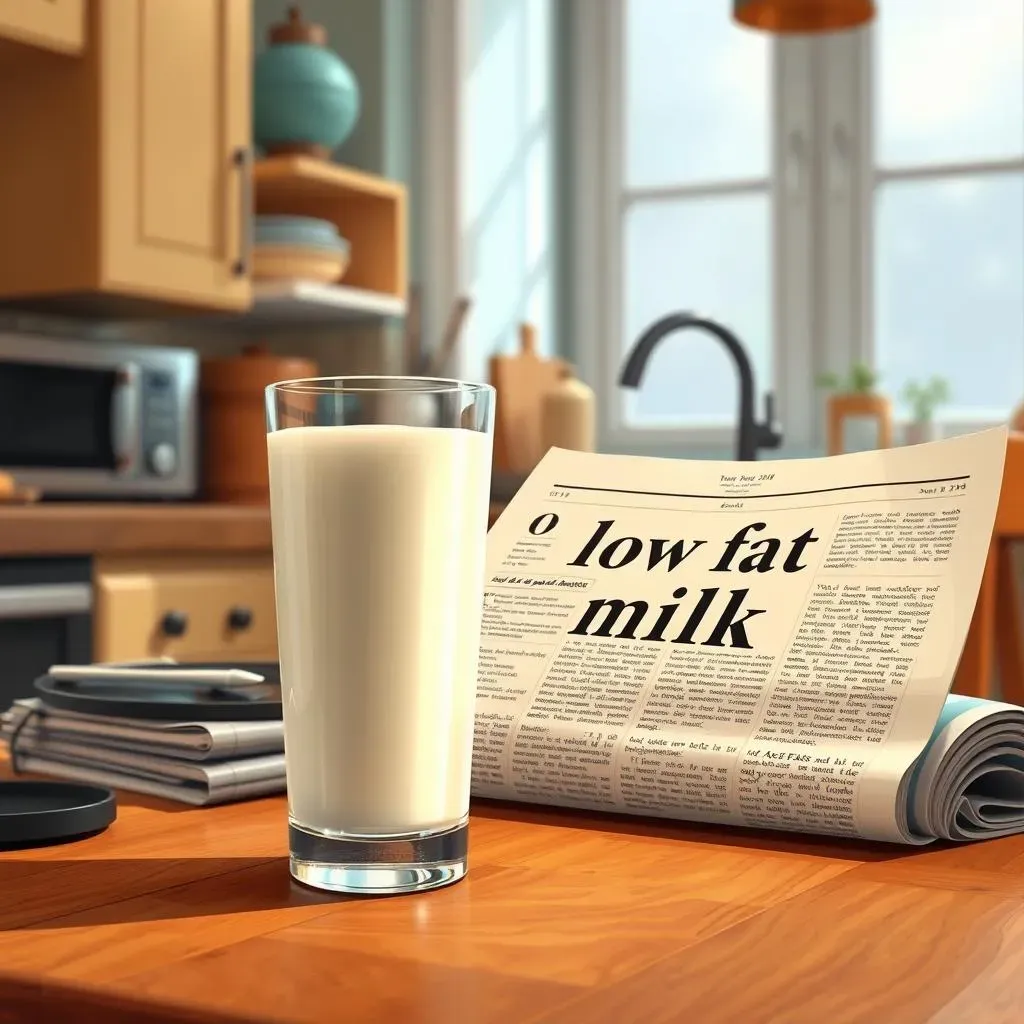Table of Contents
Ever stood in the dairy aisle, staring at the milk options, and wondered, "Is low fat milk good?" You're not alone. For years, we've been told that low-fat is the way to go, but is it really that simple? This article isn't about blindly following trends; it’s about understanding what's actually in your glass. We'll explore the differences between whole, low fat, and skim milk, and get real about saturated fat. Forget the old myths; we'll look at the latest research to see how these choices impact your weight and overall well-being. We will also look at when choosing skim milk may be the best choice, and how to make informed decisions. So, ditch the dairy aisle confusion and join me as we uncover the truth about whether low fat milk is the best choice for you.
Understanding Different Types of Milk: Whole, Low Fat, and Skim
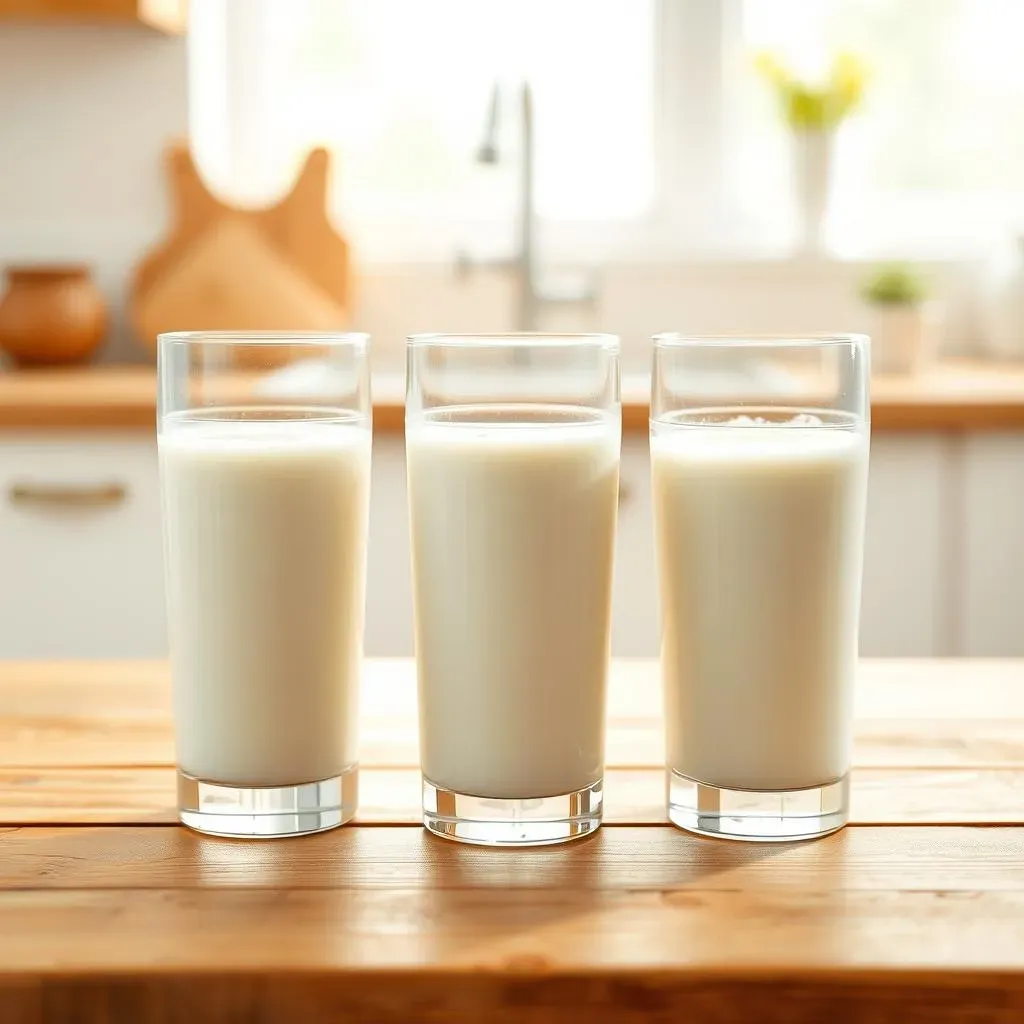
Understanding Different Types of Milk: Whole, Low Fat, and Skim
The Basics of Milk Fat
Okay, so let's start with the basics. When we talk about milk, the big difference usually boils down to fat content. Whole milk is like the original version, it has all the fat that naturally occurs in milk, which is about 3.5% or more. Then, there's low fat milk, which has had some of that fat removed, usually down to about 1% or 2%. And finally, there's skim milk, which is practically fat-free, usually around 0.5% or less. It's like the milk has gone on a diet, if you will. These differences in fat are not just about calories, they affect the taste and the way our bodies absorb nutrients too.
How Fat Content Changes the Milk Experience
Think about it: whole milk has that rich, creamy taste that you just don't get with skim. That extra fat does make a difference to your taste buds. It also gives you a fuller feeling. On the other hand, low fat milk is a bit lighter, it's a good middle ground. Skim milk is the lightest, it’s almost like drinking water with a hint of milk, but it does have its own place. Choosing between them is kind of like picking between a full-bodied red wine, a light rosé, or just sparkling water, it depends on what you're in the mood for and what you need.
Milk Type | Fat Content (approximate) | Taste & Texture |
|---|---|---|
Whole Milk | 3.5% or more | Rich, creamy, full-bodied |
Low Fat Milk | 1% to 2% | Lighter, less creamy |
Skim Milk | 0.5% or less | Light, watery, minimal creaminess |
Beyond the Fat: Nutrients in Each Type
Now, it's not all about the fat, right? Each type of milk has its own set of nutrients. Whole milk comes with more fat-soluble vitamins, like vitamins A, D, E, and K. These vitamins need fat to be absorbed properly by your body. Low fat and skim milk still have these vitamins, but sometimes they are added back to compensate for the fat removal. All types of milk are also good sources of calcium, protein, and other good stuff. So, when you're choosing, think about what your body needs. It's not a one-size-fits-all kind of thing.
Is Low Fat Milk Good? The Case for and Against
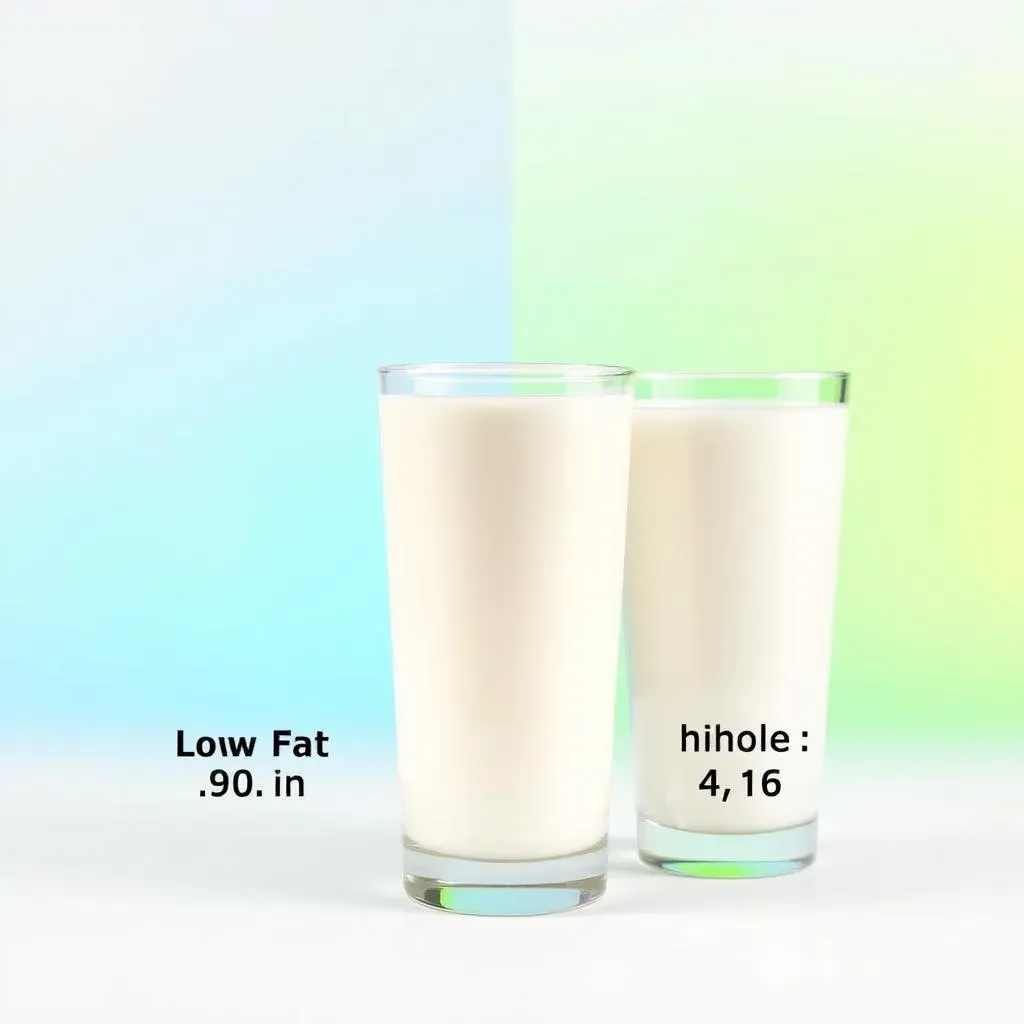
Is Low Fat Milk Good? The Case for and Against
The Traditional View: Low Fat as the Healthier Choice
For a long time, low fat milk was seen as the hero in the dairy aisle. The thinking was simple: less fat equals fewer calories and less saturated fat, which everyone thought was the enemy. Doctors and nutritionists often recommended switching to low fat or skim milk to help people manage their weight and keep their hearts healthy. It was all about cutting back on the bad stuff, and low fat milk seemed like an easy swap. This view was so common that many of us grew up thinking that anything other than skim milk was basically a dessert.
Challenging the Norm: New Research and Changing Perspectives
But hold on, things are changing! New studies are making us rethink the whole "fat is bad" idea. Some researchers are now questioning if saturated fat is really the villain we once thought it was. They are finding that the fat in milk might not be as harmful as we believed, and that it might even come with some benefits. This doesn't mean you should start chugging gallons of whole milk, but it does mean we need to look at the facts more carefully. It also means, maybe, we should not blindly believe everything we hear.
Traditional View | New Research |
|---|---|
Saturated fat is harmful. | Saturated fat might not be as harmful as previously thought. |
Low fat milk is the healthier choice. | Whole milk might have some unexpected benefits. |
Focus on cutting fat. | Focus on overall diet and balanced nutrition. |
The Gray Area: It's Not Black and White
So, is low fat milk good? The truth is, it's not a simple yes or no. It really depends on your individual needs and what you're looking for. If you're trying to cut calories or if your doctor has told you to limit saturated fat, low fat milk could be a good option. However, if you're not worried about the extra calories and you prefer the taste of whole milk, there's no need to feel guilty. The most important thing is to make a choice that fits your own body and your own goals. Maybe we should stop thinking about "good" and "bad" and start thinking about what works best for us.
Saturated Fat: The Real Story, Not the Villain You Think

Saturated Fat: The Real Story, Not the Villain You Think
The Demonization of Saturated Fat
Okay, let's talk about saturated fat. For years, it's been the bad guy in the nutrition world. We were told it clogs your arteries, raises your cholesterol, and leads straight to heart disease. It was like the ultimate dietary villain, and we all tried to avoid it like the plague. This idea came from some older studies that seemed to show a link between saturated fat and heart problems. But here's the thing: science evolves, and we learn new things.
New Perspectives on Saturated Fat
Now, some scientists are saying, "Hold on a minute, maybe saturated fat isn't so bad after all." Newer research is suggesting that the link between saturated fat and heart disease isn't as clear-cut as we thought. Some studies have found no significant connection, and others have even suggested that saturated fat might not be as harmful as previously believed. This doesn't mean we should all start eating butter by the spoonful, but it does mean we need to be more critical of what we hear and dig deeper into the facts. It’s like finding out the school bully is actually just misunderstood; a little perspective can change everything.
Old Beliefs | New Findings |
|---|---|
Saturated fat directly causes heart disease. | The link between saturated fat and heart disease is not clear. |
All saturated fat is bad. | Different sources of saturated fat may have different effects. |
Avoid saturated fat at all costs. | Moderate consumption of saturated fat might not be harmful. |
The Importance of the Big Picture
So, what does this all mean for milk? Well, it means that the fat content of your milk might not be the most critical factor in your overall diet. It's more about the big picture: your overall eating habits, your lifestyle, and your individual health needs. Focusing solely on saturated fat is like focusing on a single tree in a forest; you miss the whole ecosystem. A balanced diet, regular exercise, and listening to your body are what really matter. And, who knows, maybe that glass of whole milk can fit into a healthy life after all. It is not the villain that we once thought.
How Low Fat Milk Fits into Weight Management and Overall Health
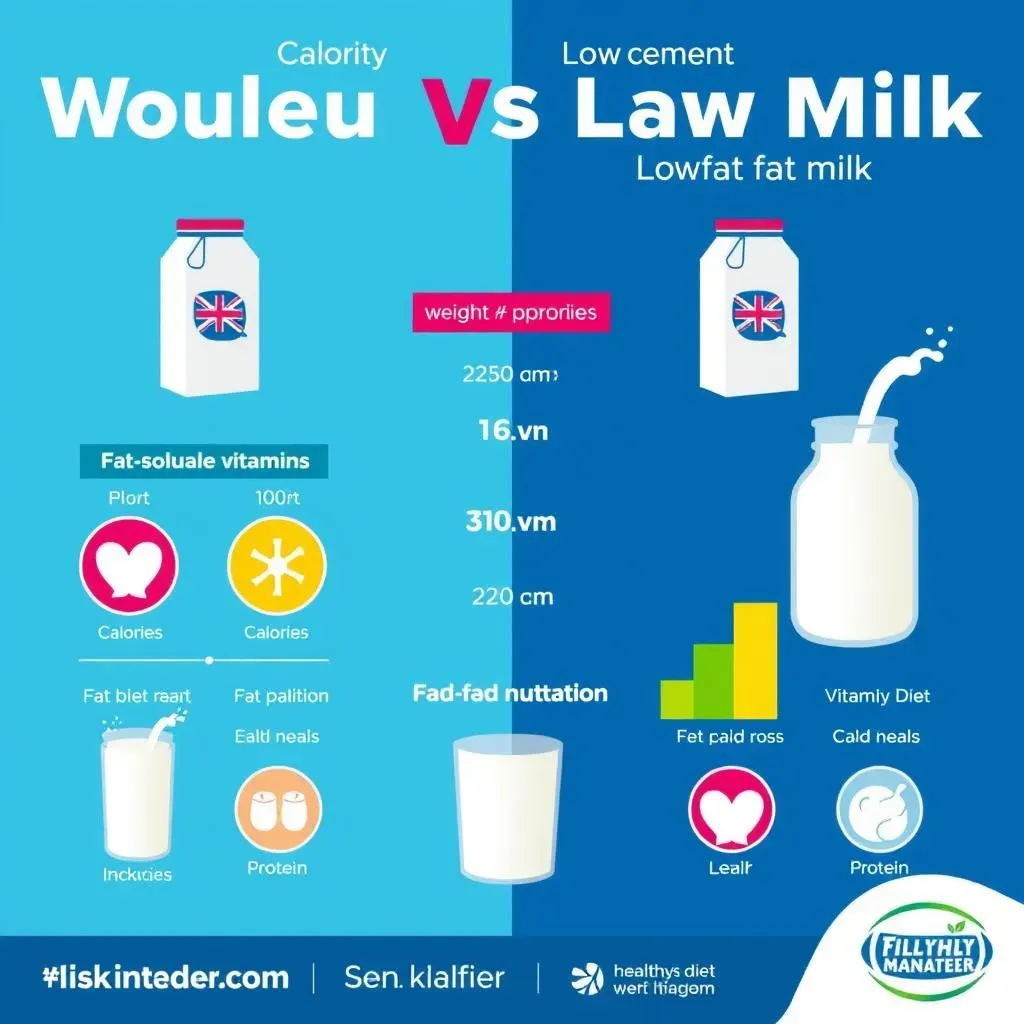
How Low Fat Milk Fits into Weight Management and Overall Health
The Calorie Question: Low Fat vs. Whole
Okay, so let's talk about calories. When it comes to weight management, calories do matter. Low fat milk definitely has fewer calories than whole milk. If you're trying to cut back, that can be a pretty big deal. A cup of whole milk might pack around 150 calories, while a cup of low fat milk might have closer to 100. That difference can add up over time, especially if you drink a lot of milk or use it in your daily coffee. So, if your main goal is to reduce your calorie intake, low fat milk can be a helpful tool.
However, it's not just about the numbers. You also have to think about how those calories affect your body. The fat in whole milk can make you feel fuller for longer, which might actually help you eat less overall. Low fat milk, on the other hand, can leave you feeling hungry sooner, which could lead to snacking or overeating. It's like the difference between a quick snack and a full meal; one satisfies, while the other just tides you over.
Beyond Calories: The Impact on Nutrients
But here's the twist: it's not just about calories; it's also about nutrients. Whole milk comes packed with those fat-soluble vitamins, like A, D, E, and K, which your body needs to function well. These vitamins need fat to be absorbed properly, so if you're cutting out fat, you might also miss out on some of these important nutrients. Low fat milk often has these vitamins added back in, but it's worth considering where your nutrients are coming from. It's like choosing between a whole, unprocessed meal and a processed snack; one has the nutrients you need, while the other is just empty calories.
Also, think about the protein. Both low fat and whole milk are good sources of protein, which is great for building muscle and feeling full. Protein is like the building blocks for your body, and it's super important for keeping you strong and healthy. So, while the fat content is different, the protein content is similar, which is something to keep in mind. It's like having a solid foundation for your health, no matter which type of milk you choose.
Nutrient | Whole Milk | Low Fat Milk |
|---|---|---|
Calories | Higher | Lower |
Fat-Soluble Vitamins (A, D, E, K) | Naturally Occurring | Often Added |
Protein | Good Source | Good Source |
The Benefits of Skim Milk: When Less Fat Might Be Better
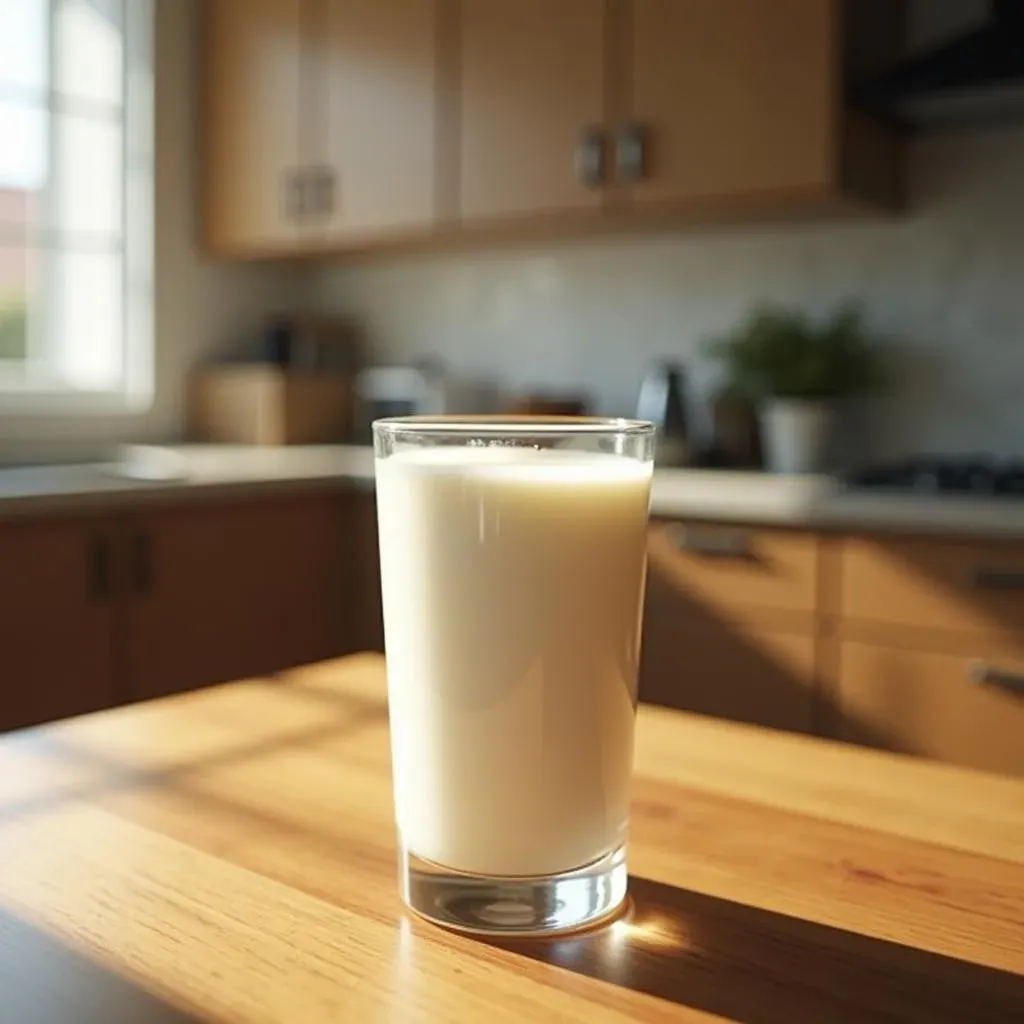
The Benefits of Skim Milk: When Less Fat Might Be Better
The Calorie Saver: Skim Milk for a Low-Calorie Diet
Let's be honest, sometimes you just need to cut back on calories. Skim milk is the clear winner here. It has the least amount of fat and, therefore, the fewest calories. If you're on a strict diet, or if you're just trying to be more mindful of your calorie intake, skim milk can be a great option. It gives you all the good stuff like calcium and protein, without the extra calories from fat. It's like having your cake and eating it too, but without the cake.
Think of it this way: if you drink a glass of milk every day, those extra calories from whole milk can add up. Switching to skim milk can help you save a significant amount of calories over time. It's a small change that can make a big difference, especially if you're trying to lose weight or maintain a healthy weight. It's not about depriving yourself; it's about making smart choices that fit your goals.
Nutrient Density: Getting the Most Bang for Your Buck
Even though skim milk is low in fat, it doesn't skimp on nutrients. It's still a good source of calcium, which is super important for strong bones and teeth. It also has a good amount of protein, which helps build and repair tissues. And, as we talked about before, many skim milk brands add back those fat-soluble vitamins that are lost when the fat is removed. So, you're getting a lot of nutritional value without all the extra fat and calories. It's like getting a premium product at a discount price.
Skim milk is a smart choice if you're looking for a nutrient-dense ingredient with fewer calories. It’s a great way to boost your intake of important vitamins and minerals without overloading on fat. This makes it a useful addition to smoothies, cereals, and recipes where you want to keep the calorie count down but still get the benefits of dairy. It’s not just about calories, but about getting the most nutrition for your calorie investment.
Nutrient | Skim Milk | Whole Milk | Low Fat Milk |
|---|---|---|---|
Calories | Lowest | Highest | Moderate |
Fat | Lowest | Highest | Moderate |
Calcium | Good Source | Good Source | Good Source |
Protein | Good Source | Good Source | Good Source |
When Skim Milk Shines: Specific Scenarios
There are times when skim milk really shines. If you have a health condition that requires you to limit your fat intake, your doctor might recommend skim milk. It's also a good choice if you're trying to cut back on saturated fat for heart health. Skim milk fits well into a low-calorie diet, and it’s often recommended for people looking to reduce their weight. It allows you to enjoy the benefits of milk while still staying within your dietary guidelines. It’s like having a specific tool for a specific job; it's not always the best choice, but it’s perfect for certain situations.
Also, if you're making something where the fat content of the milk doesn't matter much, like in a smoothie or a protein shake, skim milk can be a good option. It'll give you the liquid you need without adding extra fat or calories. It's all about choosing the right tool for the job. And, sometimes, that tool is a glass of plain, old skim milk. It is not always the best, but it can be the right one.
Making Informed Choices: Beyond the Fat Content of Milk

Making Informed Choices: Beyond the Fat Content of Milk
Considering Your Individual Needs
Okay, so we've talked a lot about fat, but let's zoom out for a sec. When it comes to choosing milk, it's not just about what's "good" or "bad" in general; it's about what's good for *you*. What are your health goals? Are you trying to lose weight, build muscle, or just maintain a healthy lifestyle? Do you have any dietary restrictions or health conditions? Your answers to these questions should guide your milk choices. It's like choosing the right shoes for a run; you wouldn't wear flip-flops for a marathon, right? So, think about your own needs before you grab that carton.
Also, think about your overall diet. If you're already getting plenty of healthy fats from other sources, maybe low fat milk is a good way to balance things out. But if you're cutting out fats in other areas of your diet, whole milk could be a way to get some of those important nutrients. It's all about finding that sweet spot where everything fits together. It’s like being a chef; you need to consider all the ingredients to create a balanced and flavorful dish.
Understanding the Source of Your Milk
Let's not forget where our milk comes from. The way cows are raised and what they eat can actually affect the quality of the milk. For instance, milk from grass-fed cows often has a different fat composition and a higher amount of omega-3 fatty acids. So, if you're looking for milk with specific nutritional benefits, it might be worth it to explore different brands and sources. It’s like choosing between a hand-picked tomato from a local farmer's market and one from a supermarket; both are tomatoes, but one has a little more character and quality.
Also, think about whether you prefer organic or conventional milk. Organic milk is produced from cows that are fed organic feed and are not given antibiotics or hormones. If you have concerns about these things, organic milk might be the better choice for you. It's like choosing between a handcrafted piece of furniture and a mass-produced one; both serve the same purpose, but one has a higher level of care and quality. It is about finding what aligns with your beliefs and values.
Factors to Consider | Description |
|---|---|
Personal Health Goals | Weight management, muscle building, overall well-being |
Dietary Restrictions | Allergies, intolerances, specific dietary plans |
Milk Source | Grass-fed, organic, conventional |
Overall Diet | Balance of fats, carbs, proteins, and nutrients |
Making the Choice That Works for You
Ultimately, the best milk for you is the one that fits your individual needs, preferences, and overall diet. Don't get too caught up in the "good" versus "bad" debate. Instead, focus on making informed choices that you feel good about. If you love the taste of whole milk and it fits into your calorie goals, go for it. If you prefer the lightness of skim milk, that's great too. The most important thing is to listen to your body and make decisions based on facts, not fads. It's like choosing a vacation destination; you need to pick a place that you enjoy, not what everyone else says is the best.
And remember, it's okay to change your mind! As you learn more about your body and your nutritional needs, you might find that your milk preferences evolve. It’s all part of the journey. Be open to experimenting, and don't be afraid to try new things. The dairy aisle can be a confusing place, but it doesn't have to be. It's like learning a new language; it takes time and practice, but eventually, you'll find your own way of speaking it. Don't be afraid to explore and find your own milk-speaking style.
